Cinches - what more I have learned
We are no longer building saddle trees, but we have two videos about how Western saddles fit horses available on our westernsaddlefit.com website.
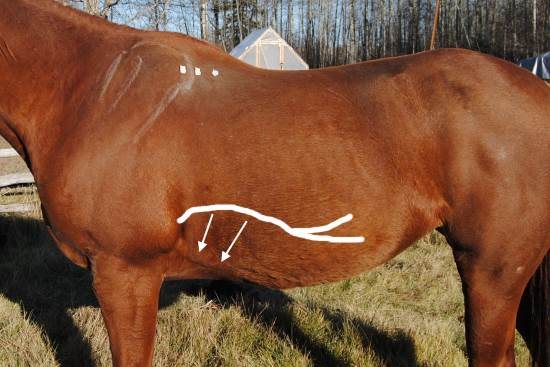
After my last blog post about the “external abdominal vein” and the real anatomy related to cinches, I had a few interesting conversations and have done a bit more research. (After all, our area of expertise is what goes on top a horse, not what goes under it.) In no way am I pretending to be an expert on cinches. But I do know a bit about anatomy and I can understand the big words in the research papers. So, in reading various lay articles, both sent to me and from searching the internet, here’s what I have found.
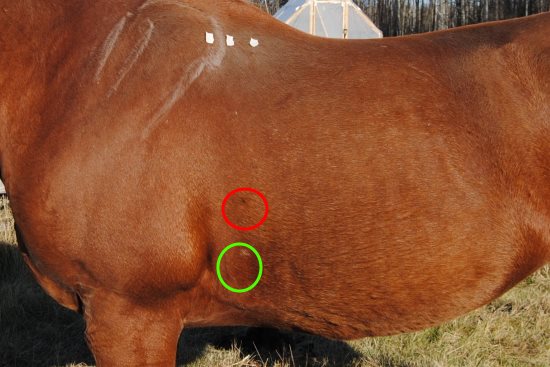
From the information in the last post, the green circle shows where they say the cinch ring should go and the red one shows where they say it shouldn’t go.
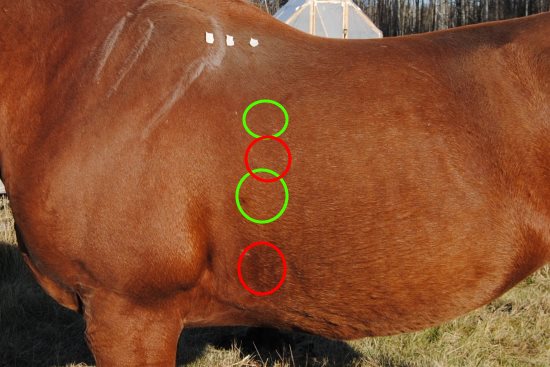 From a popular saddle fit guru, I have added two places where the cinch ring should go and two places where it shouldn’t go. Their reasoning is that you shouldn’t put it on the edge of any muscles, though that is a new one to me. They also say that you should put it below the widest part of the horse’s barrel, but then say it is OK if it is above on jumping saddles. Hmm… OK then…
From a popular saddle fit guru, I have added two places where the cinch ring should go and two places where it shouldn’t go. Their reasoning is that you shouldn’t put it on the edge of any muscles, though that is a new one to me. They also say that you should put it below the widest part of the horse’s barrel, but then say it is OK if it is above on jumping saddles. Hmm… OK then…
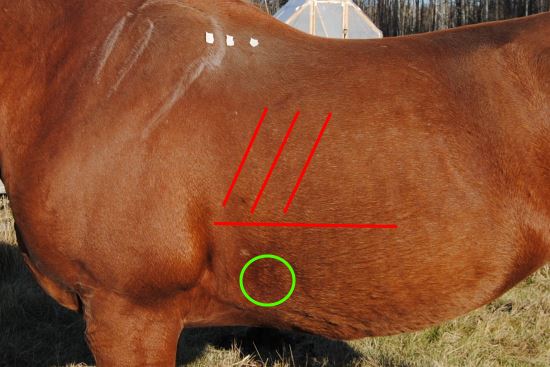
Another site that says they ride everything with a 24 inch cinch, and that is what prevents saddles from rolling. And if you have a cinch anywhere above the widest part of their barrel, it slides down and causes the saddle to roll. Not sure how something that is part of a circular system that is even on both sides and tight can slide down the side of a horse. Something else that makes you go hmm…
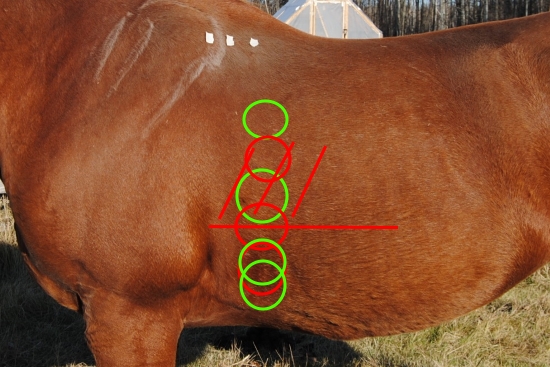
Put all together, this is what you get. So… what that tells me is that we really don’t know a lot about cinches and cinch length (though I know some people have been trying to get some real research going). Either that, or it doesn’t really matter.
But I did find one research article (links below) that tested different girth (it was English) designs, including pressure testing under cinches. It has peer reviewed results, so it isn’t just someone’s opinion. (Interestingly enough, it wasn’t instigated by a university, but by a charity group and other major contributors were from industry. Maybe that says something about how the saddle industry is going to have to go about getting real research done.) Anyway, the information I found fascinating from their research was where the high pressure under the girth occurred, and when.
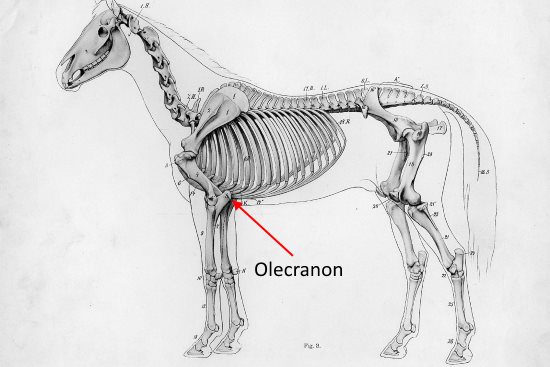
They said that “with all horses and girths, peak pressures were consistently located on the cranial edge of the girth, positioned caudal to the level of the olecranon process of the ulna”. The olecranon is the bone at the tip of the elbow - here…
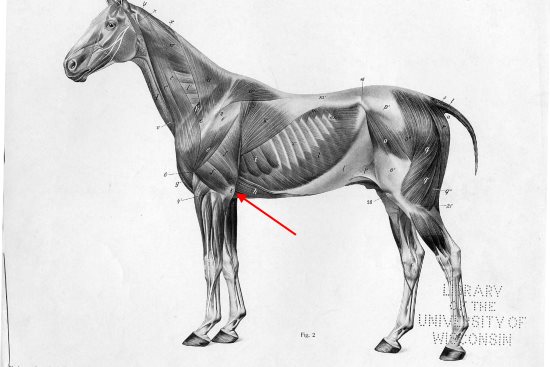
So the high pressure at the front of the girth is right behind this point, on a diagram with the muscles on it.
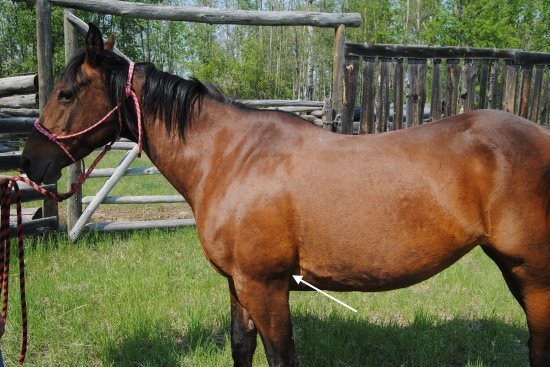
And it is behind here on a real horse. Anyone recognize where cinch sores most commonly occur??
They also discovered that pressure occurred “when the limb on the side of peak loading was in stance and the contralateral limb protracted, at the point of initial loading of the forelimb during limb retraction.” So just as the opposite limb touches down is the time of highest pressure. And if they relieved that pressure point, the horse changed the way it moved quite dramatically in a positive manner.
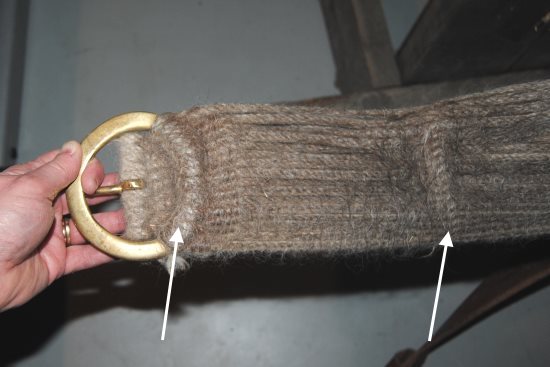
Now let's look at a cinch. Where is the pressure likely to be highest on a cinch? Edges or thick areas, such as where the material joins the cinch ring, and where there are reinforcement areas across a cinch.
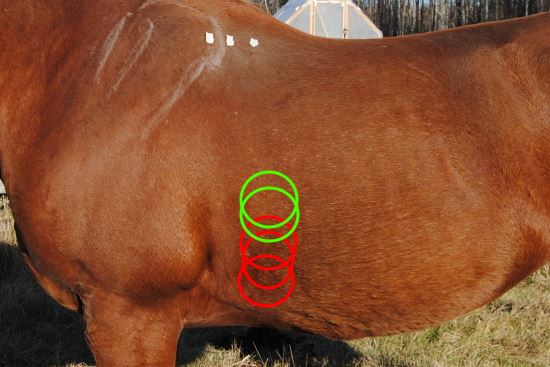
Again, I am not a cinch expert, but hopefully I have a grain of common sense, and what this tells me is that you have to be careful to not have the bottom of a cinch ring (or any of the cinch ring for that matter) or a thick or rough part of the cinch in the area behind the tip of the elbow. So here’s my take on where you don’t want your cinch ring to lie.
But honestly, it is most important to not over-tighten your cinch and to loosen it to give your horse a break any time you take one. Just basic common sense.
And now I will step out from under a horse and go back to the topside about which I supposedly know a bit more…
(1) Girth pressure measurements reveal high peak pressures that can be avoided using an alternative girth design that also results in increased limb protraction and flexion in the swing phase. Murrey, Rachel, Guire, Russell, Fisher, Mark, Fairfax, Vanessa The Veterinary Journal 2013
You can read the abstract here.
